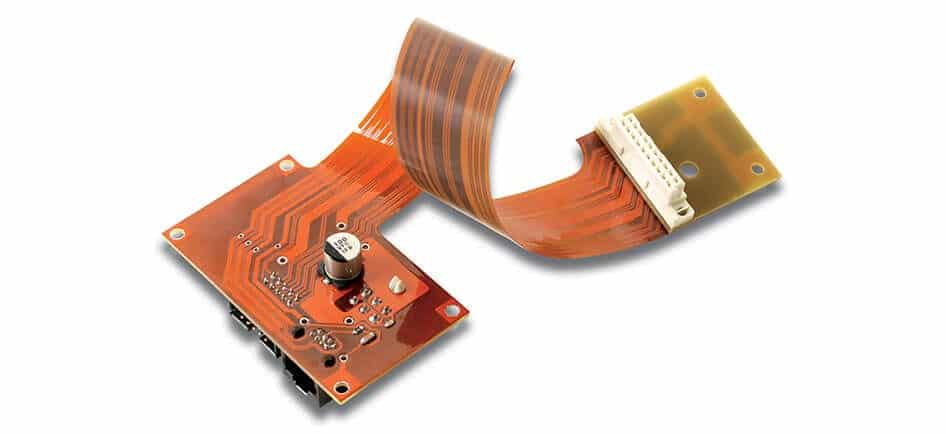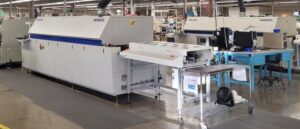Printed Circuit Boards (PCBs) are the essential components in electronic devices, serving as the backbone for electrical connectivity.
Rigid PCBs are the most common type, characterized by their solid, inflexible substrate – usually thin copper reinforced with glass. The rigidity provides a stable foundation for mounting and soldering components, ensuring durability and reliability in many environments.
But there was a time when rigid PCBs were the only option for electronic applications, and as such, a product had to be designed to accommodate the board.
Now, two newer types of flexible PCBs provide unique characteristics and distinct advantages that have increased their use and enhanced the overall electronic design process by allowing a PCB to be configured to the product.
Flex and Rigid-Flex Printed Circuit Boards
Flexible Printed Circuit Boards (Flex) As the name indicates, flex PCBs, are designed to bend and flex. These components, which connect the more rigid PCBs, are made from thin plastic substrates like polyimide, provide better tolerance for vibration and can fold into a wide variety of shapes. Flex PCBs are used in applications where space is an issue or a circuit needs to fit into irregular shapes like wearable electronics, smartphones, and medical devices. Key advantages:
- Flexibility: Their ability to bend allows them to be used in compact and dynamic environments.
- Lightweight: Flexible PCBs are lighter than their rigid counterparts, reducing the overall weight of the product.
- Thermal Management: They often provide better thermal dissipation due to their thin, flexible nature, enhancing the performance of high-power applications.
Rigid-Flex Printed Circuit Boards These hybrid boards combine the features of rigid and flexible PCBs. Rigid-flex PCBs are crafted from layers of rigid and flexible substrates laminated together, providing the structural integrity of rigid boards while offering the design versatility of flex circuits. This makes them useful for complex, high-performance applications like aerospace, military, and advanced medical equipment. The advantages:
- Design Flexibility: Rigid-flex PCBs enable complex three-dimensional designs.
- Reliability: The integration reduces the need for connectors and cables, decreasing potential points of failure and enhancing reliability.
- Space Efficiency: Rigid-flex boards allow for more efficient use of space, critical in miniaturized devices where every millimeter counts.
Niche Electronics offers all three types of PCBs depending on the need. Our team can work with a customer early in the design process to recommend the best PCB for the specific requirements of an application. Ultimately, the goal is to provide optimal performance in any application.






